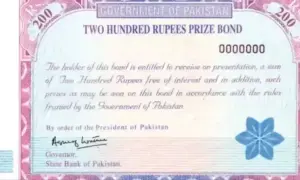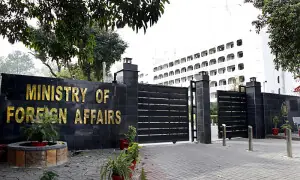US-China tariff war: Will Pakistan see decrease in solar panel prices?
The United States has imposed a massive 3521% tariff on solar panels manufactured in four Southeast Asian countries — Cambodia, Vietnam, Malaysia, and Thailand as part of former President Donald Trump’s broader tariff policy on foreign products, according to a recent report by BBC.
Following the move by the US Department of Commerce, solar panels imported from these countries will become significantly more expensive for American consumers. This has sparked speculation over whether the surplus panels will be redirected to markets with higher demand, such as Pakistan.
Pakistan, among the world’s top solar panel importers, has seen a surge in demand largely driven by rising electricity prices. According to industry experts, Pakistan imported 17 gigawatts (GW) worth of solar panels last year, despite a domestic demand of only around 8 GW, indicating a substantial oversupply.
Where does Pakistan import solar panels from?
A report by renewable energy consultancy Renewable First highlights that Pakistan has imported solar panels worth $4.1 billion over the past four years, with the majority sourced from China. In 2024 alone, Pakistan imported panels with a capacity of 17 GW, including 13 GW directly from China.
The report attributes the spike in imports to a staggering 155% increase in electricity prices over the past three years, pushing consumers towards solar energy solutions.
The Chinese connection behind Southeast Asian solar panels
While the US has targeted Southeast Asian countries with its latest tariff decision, many of the factories manufacturing these solar panels are owned by Chinese companies. The US Commerce Department has alleged that these factories received Chinese government subsidies, allowing them to undercut competitors in the American market by dumping low-cost solar panels.
Muhammad Zakir, CEO of Inverex Solar & Inverters, told BBC Urdu that “these factories essentially use Chinese technology to manufacture solar panels and equipment for global markets, including the US.”
Could Pakistan benefit from this shift?
Mustafa Amjad, Program Director at Renewable First, explained that these Southeast Asian nations acted as secondary manufacturing hubs for China to bypass direct tariffs. With the US market becoming increasingly restricted, these Chinese-backed factories will likely seek alternative markets, and Pakistan could be one of them.
However, there is a catch. Despite the potential influx, experts caution that Pakistan’s solar panel imports are already exceeding domestic demand, driven more by supply-side factors than actual market needs.
Solar panel prices in Pakistan: Any room for decline?
Energy finance analyst Haniya Asad from the Institute for Energy Economics and Financial Analysis (IEEFA) noted that while there is some dumping of surplus Chinese panels into Pakistan, significant further price drops are unlikely. She pointed out that the Pakistani market is already saturated with low-cost Chinese solar panels.
Solar panel dealer Saleem Memon added that solar panel prices in Pakistan currently stand at about Rs23–24 per watt, with no import duties or sales tax, keeping prices highly competitive. He said the arrival of Southeast Asian-manufactured panels is unlikely to bring any noticeable price change.
For the latest news, follow us on Twitter @Aaj_Urdu. We are also on Facebook, Instagram and YouTube.

















Comments are closed on this story.